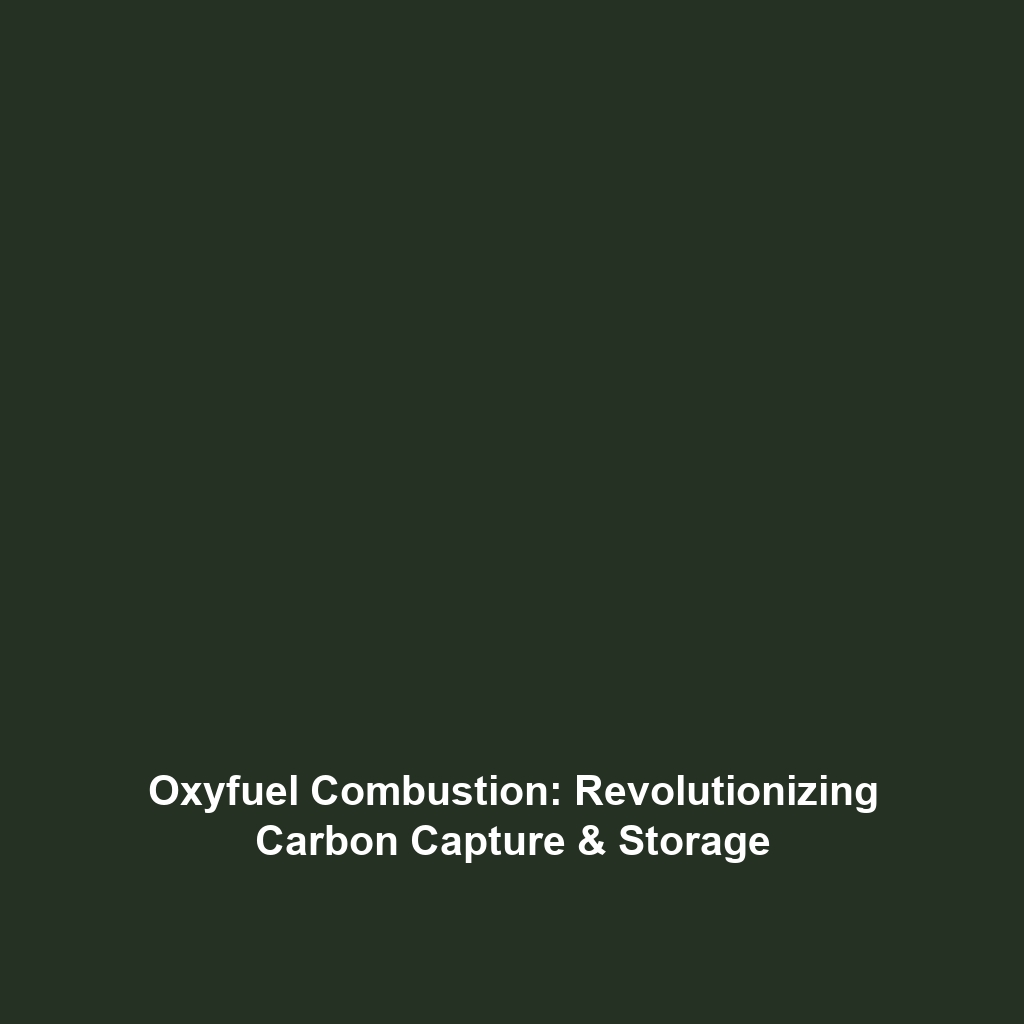<>
Oxyfuel Combustion: Burning Fuel in Pure Oxygen
Introduction
Oxyfuel combustion, the process of burning fuel in pure oxygen rather than air, represents a significant advancement in the realm of Carbon Capture & Storage (CCS). By enhancing the combustion process, Oxyfuel technology not only improves energy efficiency but also facilitates the capture of CO2 emissions. This innovative approach is crucial in the global effort to combat climate change by reducing greenhouse gas emissions from fossil fuel usage. Understanding Oxyfuel combustion is essential for those interested in sustainable technologies and effective methods for achieving lower carbon footprints.
Key Concepts
At its core, oxyfuel combustion differs from traditional combustion methods by employing pure oxygen instead of atmospheric air, leading to several critical advantages:
-
Reduced Nitrogen Oxides (NOx) Emissions
The absence of atmospheric nitrogen results in significantly lower NOx emissions, contributing to better air quality.
-
Higher Efficiency
Oxyfuel combustion achieves higher flame temperatures, leading to improved thermal efficiencies in energy generation.
-
Streamlined Carbon Capture
Oxyfuel processes yield a more concentrated stream of CO2, simplifying the capture and storage processes associated with CCS.
These concepts illustrate how Oxyfuel combustion integrates seamlessly into the broader CCS framework, enhancing the implementation of sustainable energy solutions.
Applications and Real-World Uses
The implications of Oxyfuel combustion extend across various industries. Notable applications include:
- Power Generation: Many modern power plants utilize Oxyfuel technology to produce electricity while minimizing carbon emissions.
- Cement Manufacturing: This technique is increasingly adopted in cement production, a process known for its substantial CO2 emissions.
- Metal Production: Oxyfuel combustion is applied in metallurgy, improving the smelting process and reducing pollutants.
Understanding how Oxyfuel combustion is utilized in these fields underlines its role as a cornerstone of effective Carbon Capture & Storage (CCS) strategies.
Current Challenges
Despite its benefits, Oxyfuel combustion faces several challenges that hinder widespread implementation:
- High Initial Costs: The infrastructure required for Oxyfuel systems can be expensive to install and operate.
- Technical Challenges: Operating at higher flame temperatures necessitates advanced materials and technologies that are still under development.
- Regulatory Hurdles: Existing regulations may not accommodate new technologies, slowing down the adoption process.
Addressing these challenges is crucial for advancing Oxyfuel combustion within the Carbon Capture & Storage (CCS) landscape.
Future Research and Innovations
Future research into Oxyfuel combustion is pivotal for unlocking its full potential within CCS. Key areas of innovation include:
- Advanced Materials: The development of more resilient materials that can withstand higher temperatures and corrosive environments.
- Improved Carbon Capture Technologies: Innovations that enhance the efficiency of capturing CO2 from combustion processes.
- Integration with Renewable Technologies: Studies assessing how Oxyfuel combustion can complement renewable energy sources for hybrid energy systems.
Ongoing advancements in these areas will play a significant role in refining and expanding the application of Oxyfuel technology.
Conclusion
In conclusion, Oxyfuel combustion presents a remarkable approach to burning fuel in pure oxygen, significantly contributing to the objectives of Carbon Capture & Storage (CCS). While challenges remain, the promise of this technology for improving energy efficiency and reducing carbon emissions is considerable. For those interested in learning more about innovative carbon management strategies, consider exploring our articles on related CCS technologies and future energy solutions.


